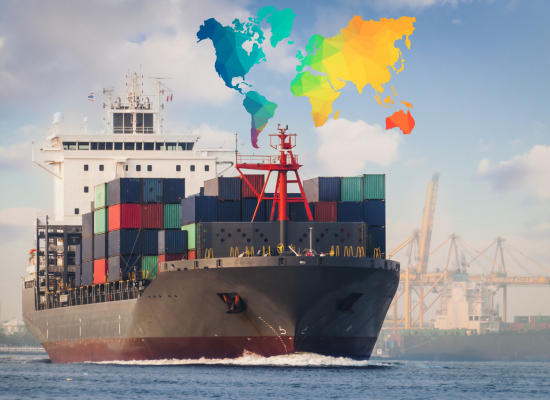Freight Route Innovations in Vietnam’s Northern Corridor
As Vietnam continues to strengthen its role in regional and global supply chains, infrastructure development in the northern corridor has become a strategic priority. With proximity to China, thriving industrial zones, and key border crossings, the north has long served as a critical hub for manufacturing and export logistics. In recent years, innovation in freight routes—both in terms of physical infrastructure and digital connectivity—has begun transforming how goods move through the region.
This blog examines recent freight route innovations in northern Vietnam, their impact on trade efficiency, and how businesses can strategically benefit by aligning with the right partners in the region.
The Rise of the Northern Corridor in Trade Strategy
Vietnam’s northern corridor stretches from Hanoi to key border gates such as Lang Son, Lao Cai, and Quang Ninh, providing a vital link between the Chinese and ASEAN markets. With China accounting for a significant portion of raw materials and capital goods imported to Vietnam, efficient freight operations along this corridor are essential.
Furthermore, the northern region is home to a growing number of industrial parks, particularly in provinces like Bac Ninh, Hai Duong, and Ha Nam. These zones rely on seamless connectivity to ports, airports, and rail terminals to ensure timely delivery of goods.
New Infrastructure and Smart Logistics Routes
1. Hanoi-Lang Son Expressway Expansion
A significant innovation in the corridor is the expansion of the Hanoi-Lang Son expressway. This highway connects Hanoi with the Huu Nghi border gate—one of the busiest land trade gateways with China. The expansion project, completed in early 2025, allows for increased cargo capacity and reduced delivery times.
Modernization of this expressway supports both import-export activities and domestic distribution. Exporters in electronics and textiles, in particular, have benefited from quicker and safer delivery options.
Businesses aiming to capitalize on such efficiencies often engage a bestsourcing agent Vietnam to help navigate customs procedures and local transport networks.
2. Upgrades at Lao Cai Border Gate
In 2025, the Vietnamese government completed key enhancements at the Lao Cai international border gate. These improvements include the integration of e-customs, expanded inspection areas, and streamlined rail-to-truck transshipment processes. This has resulted in faster clearance times and reduced congestion—especially during high-volume periods.
Manufacturers operating near the China border can now ship goods more reliably and with fewer administrative delays. A bestsourcing agent Asia often supports foreign buyers by coordinating with customs officers and ensuring documentation compliance.
3. Hai Phong Port: New Berths and Smart Systems
Hai Phong remains the major seaport in northern Vietnam, serving as the primary maritime exit for industrial production in the Red River Delta. In 2025, several new berths became operational at Lach Huyen deep-water port, improving the port’s capacity to handle larger container ships and reducing transshipment reliance on foreign ports.
Additionally, smart logistics platforms have been introduced, allowing for container tracking, automated scheduling, and electronic billing. These innovations help reduce bottlenecks and ensure smoother cargo flows to and from the port.
For businesses exporting to the U.S. or Europe, aligning with a bestsourcing agent Vietnam can be essential to accessing reliable freight providers with optimal cost-performance balance.
Rail Freight Integration: Lao Cai to Hanoi and Beyond
Vietnam’s northern rail corridor continues to improve. The railway from Lao Cai to Hanoi is now linked to China’s Kunming line, enabling multimodal cargo movement. Rail freight offers a faster and greener alternative to trucking, particularly for bulk goods and high-volume exports.
The Vietnamese government has also launched digital rail logistics platforms, improving cargo tracking and route planning. These systems are designed to appeal to international buyers looking for transparent and efficient freight options.
Shippers engaging in cross-border rail services often consult with a bestsourcing agent Asia to ensure their goods are handled by licensed operators and that schedules align with their inventory cycles.
Last-Mile and Cross-Docking Warehouses
One of the biggest shifts in the northern corridor is the rise of cross-docking and last-mile logistics facilities in provinces such as Bac Ninh and Hung Yen. These centers enable goods to be unloaded, sorted, and reloaded within hours—minimizing the need for long-term warehousing.
Brands with short product life cycles, such as fashion and electronics, benefit immensely from this model. A bestsourcing agent Vietnam often oversees supplier-to-retailer delivery systems, reducing costs and improving speed to market.
Benefits for U.S. Importers and Investors
As U.S. companies continue diversifying supply chains away from China, Vietnam’s northern corridor offers several strategic advantages:
-
Proximity to suppliers in China while benefiting from Vietnam’s trade agreements.
-
Access to improved border infrastructure for faster cross-border movement.
-
Seamless integration with sea and rail freight routes for global shipping.
-
Availability of skilled labor and modern industrial zones.
Given the complexity of navigating this evolving landscape, sourcing and manufacturing partners need to rely on localized knowledge. That’s where a bestsourcing agent Asia becomes essential in ensuring success across production, logistics, and compliance workflows.
Conclusion
Vietnam’s northern freight corridor is undergoing a quiet revolution. With expressways, rail upgrades, digital platforms, and smarter ports, the region is becoming a logistics powerhouse capable of supporting global supply chains.
For importers, especially those in the United States, now is the time to evaluate sourcing strategies with a fresh lens. Freight innovations in northern Vietnam not only increase efficiency but also reduce costs and improve time-to-market advantages.
Engaging a bestsourcing agent Vietnam offers the local expertise necessary to harness these freight innovations while avoiding common pitfalls. Whether your focus is apparel, electronics, machinery, or agricultural exports, the right agent can help optimize the entire value chain.

